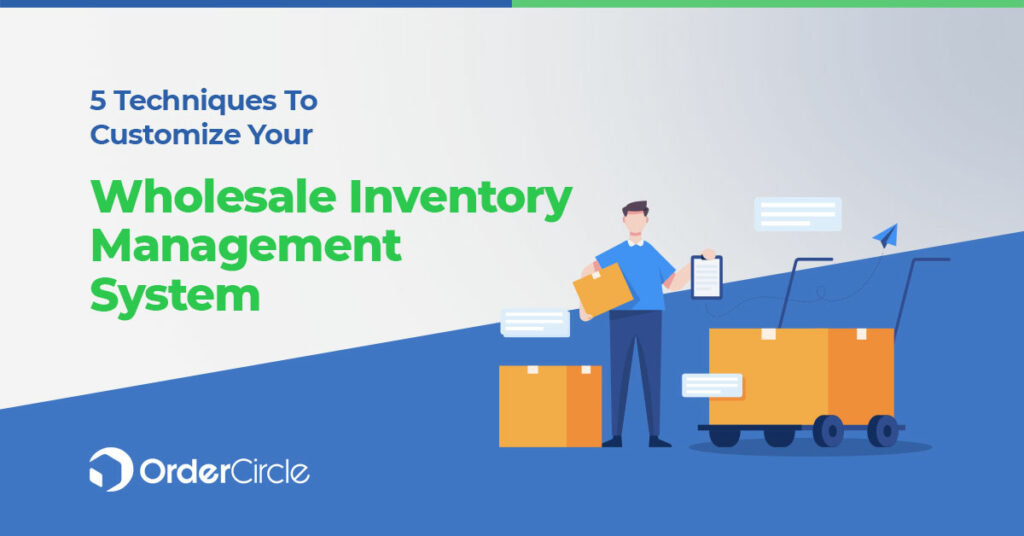Businesses around the world are moving towards the automation of their unique workflows. However, the ‘one size fits all’ strategy often disrupts set processes or leads brands to make adjustments to mold into such solutions. The problem deepens when it comes to selling online, especially for the backend teams. Areas like inventory management, stock keeping, and delivery tracking need a much more sophisticated solution.
Here’s where the concept of customized inventory management fills the latent void. But before we understand custom techniques for inventory management, let’s set some context.
Why Do Businesses Need Custom Inventory Management?
Consider two scenarios:
- Workflow Complexity: Big retailers like Zara or Walmart have multiple distribution channels and have order fulfillment through shipping carriers. Then there are brands like Amazon, that outsource their fulfillment services. In any case, a generic inventory management system would not fit the bill.
With third-party applications involved or complex delivery systems ahead, inventory integrations need to have a customized solution.
- Implementing New Sales Strategies: If brands don’t have a complex workflow, they are still constantly evolving. Today, even smaller businesses are switching to omnichannel retail or creating multiple touchpoints for faster sales. In such a situation, they need inventory automation that can adapt to the changing strategies.
A customized solution can deploy changed workflows easily and enable continuous tracking of the business processes involved.
Techniques For Custom Wholesale Inventory Management
When creating a customized wholesale inventory management system, it is important to build around some pre-defined templates. These techniques can then be tweaked per a brand’s requirements. Some of the best techniques for inventory management include:
- The ABC Categorization
Stocks are categorized using ABC analysis in inventory control according to their value, price, and sales volume. These standards dictate how many products a business will put into the market. As its name implies, it is divided into the following groups:
- Class A: High-priced, high-class items with tight controls. Generally have a small inventory.
- Class B: Mid-priced and mid-priority items. They have a moderate sales volume and stocks.
- Class C: Low-value, low-cost items with high sales and high inventory needs.
With this analysis, companies can take care of their high-value products, ensure continuous in-flow and stock for high-selling products and reduce costs and losses.
- LIFO And FIFO
The procedures of First-in, First-out (FIFO) and Last-in, First-out (LIFO) can be used to estimate the cost of products sold. While LIFO believes the last unit to arrive, or newer inventory, has priority, FIFO encourages the oldest inventory to be sold first. While LIFO can stop things from going bad, FIFO is a great approach to keeping inventories current.
Although each method has benefits, LIFO is not always feasible for all businesses (because some would prefer not to have their older product sitting around in stock). Because FIFO ensures that the oldest products leave the warehouse before anything else, it is employed more frequently.
- Safety Stock Management
A safety stock is an extra set of commodities kept on hand as a safeguard against the unpredictability of the market. It involves inventory management for additional inventory that is ordered and kept on hand in case the business runs out of supplies for replenishment. This lessens the likelihood of stock-outs, which are frequently brought on by bad forecasts or unanticipated changes in client demand.
- Just-In-Time (JIT) Inventory
Using just-in-time (JIT) inventory management, businesses can place supplier orders for raw materials in tandem with their production schedules. Since new products are delivered to businesses only when they are actually needed, using the JIT technique is a terrific way to cut expenses and avoid ordering excess inventory.
Your money and resources will likely be wasted on inventory that doesn’t sell, but companies that use the JIT technique benefit from increased productivity and reduced waste. You can reduce inventory expenses and profit from a more effective warehouse/distribution flow by just acquiring goods as they are required for the production process.
- Economic Order Quantity
The phrase “economic order quantity” (EOQ) refers to the optimal quantity that a business should buy to reduce its inventory costs, such as shortage or carrying costs. The economic order quantity formula is used to determine the most units required (per order) to reduce purchasing with the overall purpose of reducing spending.
The EOQ model’s tailored recommendations for your specific business are one of its main advantages. Sometimes, EOQ may recommend making a larger purchase to benefit from discounted bulk purchasing and to cut down on total costs associated with multiple shipments.
Using these techniques, brands can segue into customized inventory management. An FMCG company, for instance, can work its inventory around the LIFO and FIFO templates, altering the flows based on the kind of food product and the location of delivery.
Tips For Customizing Your Inventory Management
A few things to keep in mind before you get into the whole customization process includes:
- Create an inventory management plan to address product movement and inventory control.
- Narrow down a customized plan around pre-defined templates to find the perfect software fit.
- Establish consistency in labeling products and set a standard procedure for it.
- Review your shipments regularly to prevent any inventory loss.
- Leverage inventory analytics to optimize your customized plan from time to time.
If you want to get wholesale inventory management customization, experts at OrderCircle can help you out. Get a free demo of the product and understand where to begin. Click here to book your slot.

